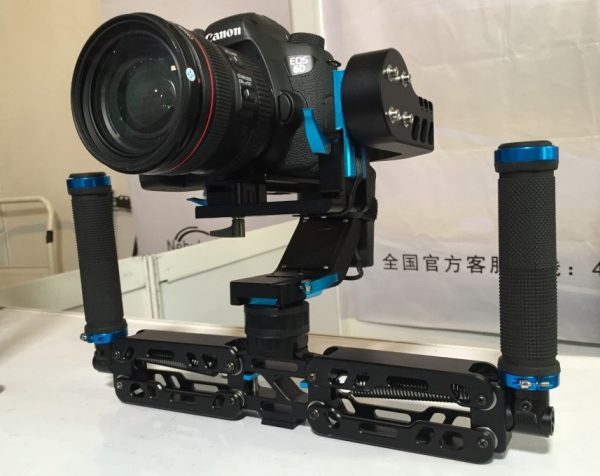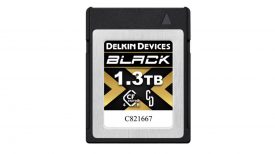We first saw the Filmpower Nebula 4200 brushless gimbal at the BIRTV show in Beijing earlier this year. Designed for DSLRs, mirrorless and small video cameras, it has a unique mechanical spring arm suspension system that tries to eliminate small unwanted vertical movements when you walk with the device. The grip of the 4200 is interchangeable and you can also fit a single handgrip that makes it look more like a larger version of the original Nebula 4000. When we saw it in China it was a non-working prototype. Ever since we have been eager to see just how well it actually works.
We still haven’t had a chance to test it ourselves, but Tomasz Wolski of Film Cyfrowy has been lucky enough to get one of the first production models. He gave us his thoughts after several days of testing:

Tomasz says that the Nebula 4200 is fairly light and you can handhold it much longer than a bulkier gimbal like the DJI Ronin. It can be easily held in one hand while using the other to open the doors or scratch your nose.
Balancing the gimbal is fast and takes just a few minutes. The clever design means that the 4200 can be put down on a table and you do not need to carry a stand with you. The Nebula comes in a small, lightweight case, unlike other gimbals like the Ronin that come in a large suitcase. This is a big difference.
There are various mounting options for handles – you can have dual handles above the camera like a traditional brushless gimbal, one handle like the Nebula 4000, or on either side like Letus Helix. The last is his favourite way of shooting because the camera is at chest height. When used with a single handle it can also be used upside down in low mode.
In the dual handle configuration with the spring arms you can still see steps while walking if you have poor technique. I actually expected the spring to work much better and they are not easy to work with. You need to handle the gimbal very carefully in this mode, walking on very bent legs with very gentle movement. If you get this right it looks better than the single handgrip option. If you don’t follow this gentle operating style then the springs actually strengthen the “walking” effect and turn it into more of a “kangaroo effect”.
One thing that I did notice is that when you turn on additional in-camera stabilisation with the Sony a7S II it makes shots even more stable and smooth. You can see this in the video below:
Since getting the gimbal I have not managed to configure the software to tune it. For some reason I cannot connect to it by USB cable or Bluetooth. I do not know if the problem is my computer, my cables or the gimbal. I don’t even know how to set different profiles to switch between follow mode and lock mode. For now it is stuck in follow mode.
I also noticed that the movements are jerky when cornering or rotating gimbal. The movements appear quite artificial. I hope I can tune the gimbal to correct this and I’m going to contact Filmpower to see if they can help.





